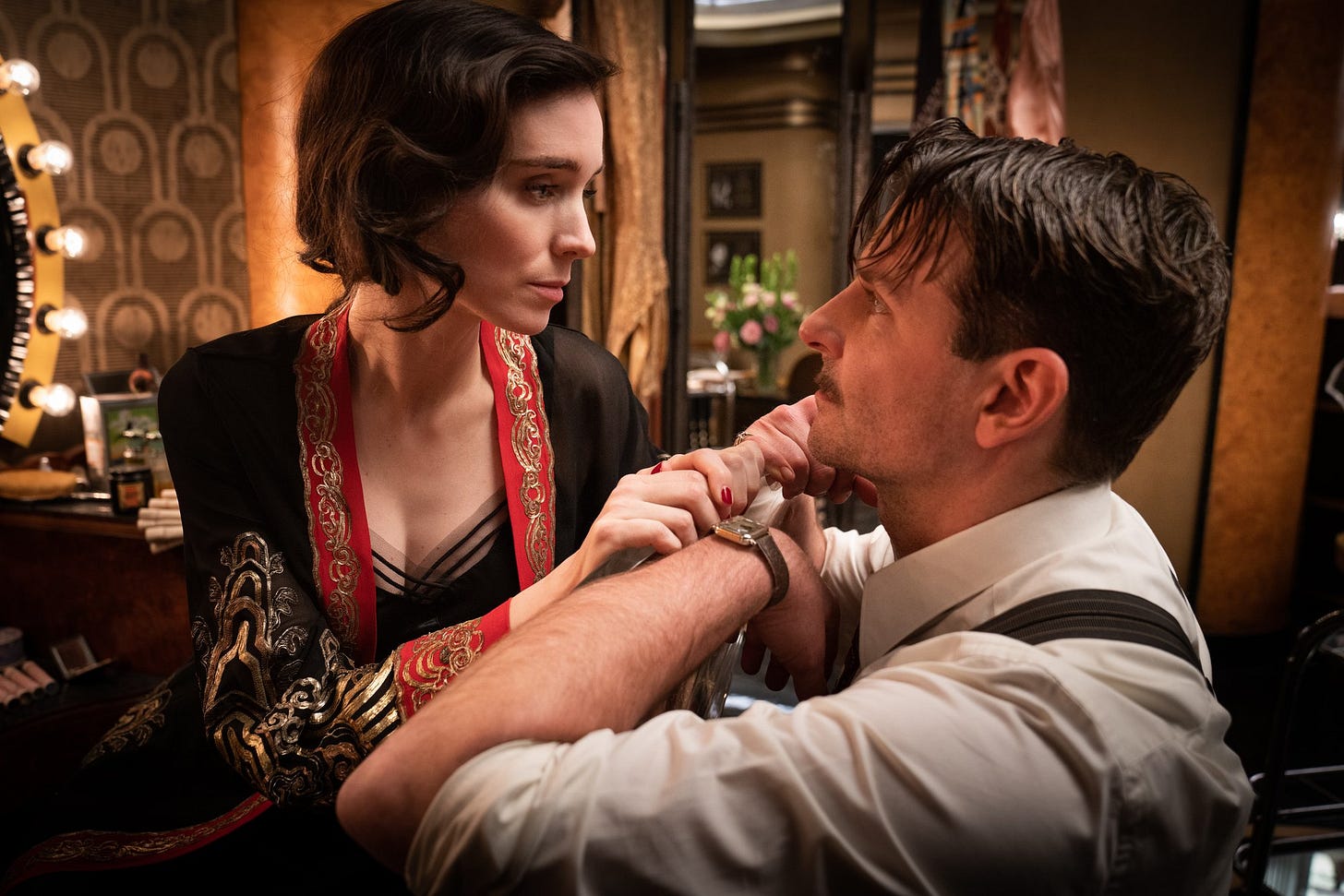'Nightmare Alley' Review
Guillermo del Toro’s heart of darkness.

I often find myself wanting to like Guillermo del Toro movies more than I actually do. So when I say that Nightmare Alley, del Toro’s adaptation of William Lindsay Gresham’s book of the same name first adapted into a movie in 1947, is his best movie since Pan’s Labyrinth I absolutely mean it. Just understand that this praise is tempered a hair.
One issue with del Toro is that his villains are frequently so irredeemably villainous that it undercuts the tension in the storytelling. You see it in The Shape of Water, when an innocent and wholesome deaf woman finds herself surrounded by bigots and warmongers trying to stand in the way of pure, true love (between a woman and a fish monster). But it’s dramatically inert: the hilariously diverse ragtag group of heroes cannot help but triumph over the avatars of the shockingly evil society they find themselves up against.
This sort of thing can work—it does in Pan’s Labyrinth, though possibly only because the protagonist is a literal child and the villain is a literal Fascist and because that film’s entire reason for being is to give a child a way to grapple with not only evil but also her own demise—but it often feels too easy. Nightmare Alley solves this problem by removing all heroes from the picture, instead presenting to us a series of grifters of varying shades of wickedness. There’s no moral core to the movie, meaning that we can simply revel in the grimy thematic muck as much as we revel in the grand set and creature design and heightened production values del Toro is, properly, best known for.
Bradley Cooper stars as Stanton Carlisle, who opens the film by burying in the floorboards what appears to be a body and lighting the house in which he’s standing on fire before hopping a bus out of town. The last stop brings him to a carnival that is packing up and moving on; he grabs a job with the traveling crew of freaks and fakes after watching a geek bite the head off a live chicken. (We watch this happen as well; del Toro has yet to discover an instance of gore he prefers to look away from, and Nightmare Alley is littered with intense moments of violence to rooster and human alike.)
In addition to learning the secrets of the geek show from Clem (Willem Dafoe), Stanton assists Zeena the Seer (Toni Collette) and her husband, Pete (David Strathairn), in their act. Once upon a time, Zeena and Pete were great, using a coded language to perform feats of mentalism before a stunned live audience; now he’s a drunk and she’s just trying to get laid. But they teach the drifter the secrets of their routine and, when Pete dies, Stanton flees to bigger and better things with the beautiful Molly (Rooney Mara) in tow.
Flashforward a few years and the Great Stanton is the toast of the big city, performing a routine that wows audiences and brings him to the attention of Dr. Lilith Ritter (Cate Blanchette), a shady psychiatrist, and Ezra Grindle (Richard Jenkins), a fabulously wealthy and potentially mob-connected businessman. As he digs himself in deeper, Stanton’s grifting skills are put to the test.
If you’ve seen the original film, there aren’t any surprises for you here. Adapted by Kim Morgan and del Toro, this version is a bit looser and about 25 minutes longer than Edmund Goulding’s original, sans credits. I’d be lying if I said that I found the additions necessary—Stanton’s backstory doesn’t really add much to the film’s overall meaning—but I’d also be lying if I said I didn’t love what Morgan and del Toro did with the ending, sticking closer to Gresham’s book. It’s delightfully dark, a masterpiece of cinematic comeuppance.
The real treat, as is often the case with a del Toro production, is the lived-in and luscious look of the world he’s brought to life. He and his design team put together a luxe nightmare vision of a second-rate carnival, rife with pickled fetuses and shocking (literally: electric) sideshows. It takes a lot of care and attention to detail and, well, money to look as cheap and shabby and dangerous as del Toro’s sideshow appears.


